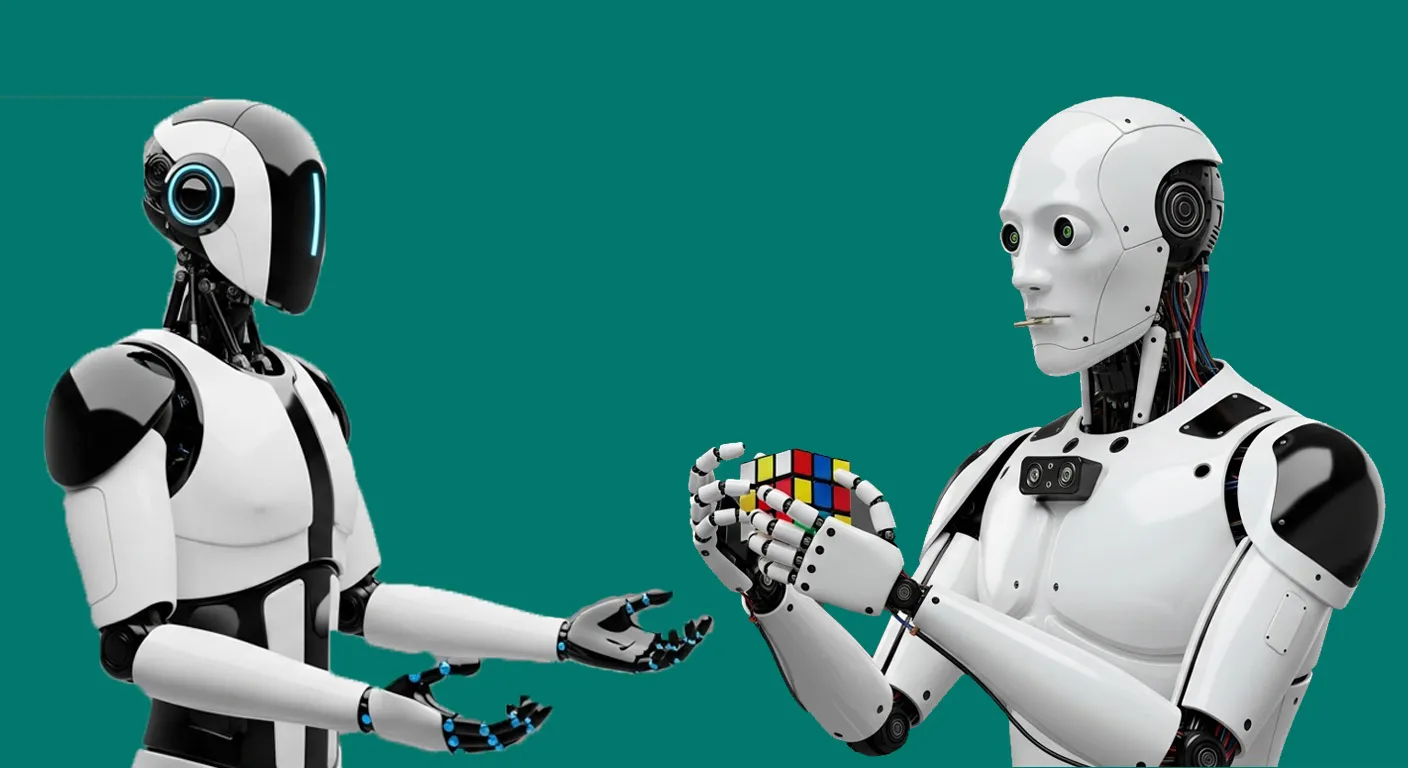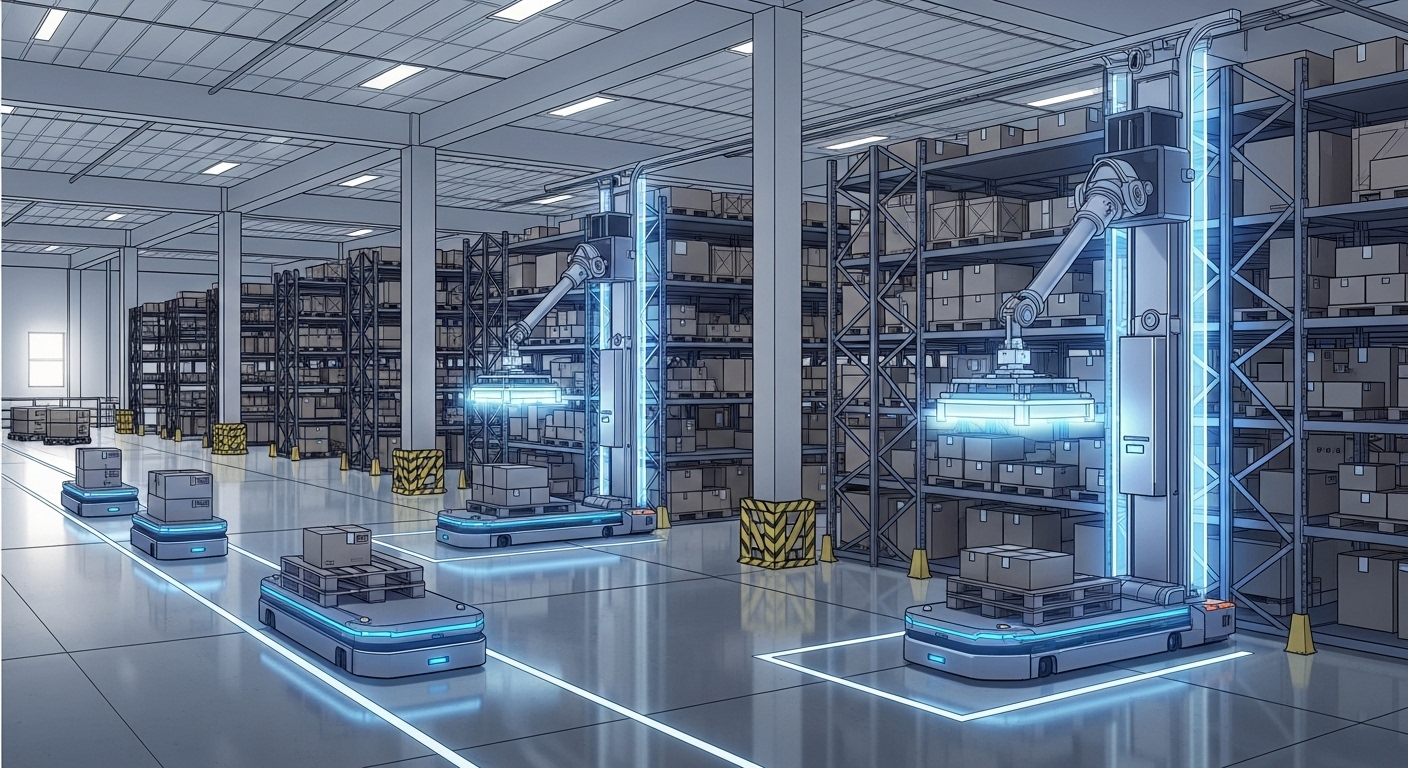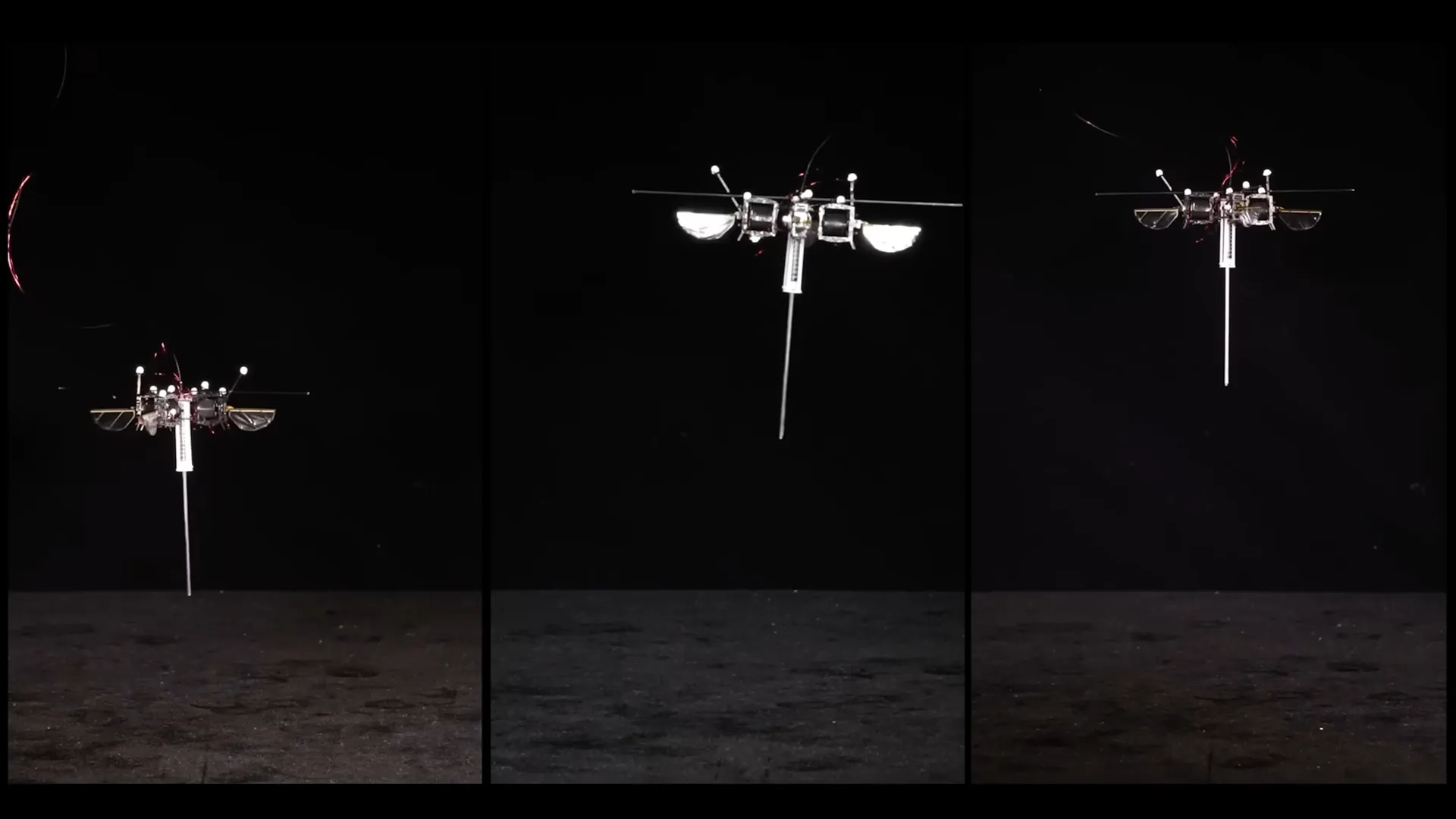Key Takeaways
- Modern machines use tactile feedback for navigation, reducing reliance on visual systems
- Core hardware components remain consistent across simple and complex builds
- Visual appeal directly impacts human acceptance of automated systems
- Consumer-grade electronics now power professional-grade prototypes
- Balancing beauty and practicality drives commercial success
MIT’s Cheetah 3 can climb debris-covered stairs without cameras – reacting to terrain through pressure sensors alone. This breakthrough in "blind locomotion" proves today’s machines don’t just mimic movement. They anticipate challenges like living organisms.
From Boston Dynamics’ parkour-performing Atlas to battle-ready combat bots, intelligent systems now balance form and purpose. What unites them? Four core elements: sensors, actuators, controllers, and power sources. These components work together whether building a self-driving toy car or a disaster-response prototype.
We’re witnessing a shift where sleek, dynamic shapes enhance both performance and user trust. Engineers no longer prioritize pure utility. A robot that looks approachable often gets adopted faster, even in industrial settings.
Affordable microprocessors have democratized innovation. Hobbyists today use parts costing less than a smartphone to prototype functional machines. This accessibility fuels creativity across industries – from healthcare to entertainment.
Exploring the Modern Robotics Landscape
Today’s machines evolve faster than ever – from backyard tinkerers to corporate labs, innovation thrives at every scale. Take MIT’s 90-pound Cheetah 3: this robot navigates chaos without cameras, using pressure-sensitive feet to "feel" its way through rubble. Boston Dynamics’ Atlas takes mobility further, performing backflips and parkour jumps that rival human athletes.
"We're teaching machines to trust their senses, not just their programming."
- MIT Leg Lab researcher
Surprisingly, these advanced systems share DNA with simpler builds. Combat bots and RC cars use similar core principles: sensors for input, actuators for movement, and controllers for decision-making. The difference lies in complexity – a toy car might have 3 sensors, while Atlas uses hundreds.
This technological leap creates new applications. Farmers now deploy soil-sampling robots built from smartphone parts. Rescue teams test affordable prototypes for disaster zones. As components shrink and prices drop, engineering breakthroughs become accessible to all.
We’re witnessing a rare moment where garage inventors and corporate labs push boundaries simultaneously. The next generation of robots won’t come from one source – they’ll emerge through global collaboration.
Fundamentals of Robotics Design
Building functional machines requires mastering four foundational pillars. Mechanical structures form the skeleton – motors and gears convert electricity into motion. A basic wheeled platform uses simple DC motors, while advanced systems employ precision-engineered transmissions.
Electronics act as the nervous system. Microcontrollers like Arduino process data from sensors to actuators. Proper circuit layouts ensure stable power flow between components, preventing overloads or signal interference.
"Component compatibility determines success. Mismatched voltage levels can fry a $5 sensor as easily as a $500 processor."
- IEEE Hardware Specialist
Programming bridges the physical and digital worlds. Code translates environmental data into actions – a vacuum bot avoiding furniture uses similar logic to industrial arms sorting packages. Open-source libraries now simplify complex tasks like pathfinding.
Fabrication ties everything together. 3D-printed enclosures protect delicate circuits while allowing heat dissipation. Laser-cut joints enable modular upgrades without redesigning entire systems.
These elements create cohesive machines. A farm drone’s lightweight frame (mechanics) supports weather-resistant circuits (electronics), guided by terrain-mapping algorithms (programming) inside carbon-fiber shells (fabrication). Each choice impacts performance and reliability.

Balancing Aesthetics and Functionality in Robot Design
A robot's outer shell does more than protect – it communicates purpose through every curve and contour. MIT's shape-shifting machine uses magnet-controlled panels that fold like origami, switching between rolling discs and walking legs. This proves casings now serve dual roles: safeguarding circuits and shaping user perceptions.
Material choices dictate both durability and personality. Industrial arms need aluminum armor, while educational bots benefit from colorful 3D-printed plastics. Weight distribution matters too – heavy-duty frames handle rough terrain, but sleek carbon fiber suits aerial drones.
"Smart materials let us rethink traditional forms. Why choose between wheels and legs when you can have both?"
MIT CSAIL engineer
Sensory integration drives visual harmony. Proximity sensors become glowing eyes. Motion detectors hide behind smooth panels. These subtle touches make form factor adjustments feel intentional, not forced.
Power systems influence silhouettes. Battery packs create distinctive humps, while tethered units prioritize streamlined profiles. Every bulge or curve must balance technical requirements with emotional resonance.
We’ve seen hospital bots gain trust through soft edges, while factory models use angular lines to signal efficiency. The best designs don’t just work well – they make users want to engage.
Material Selections and Fabrication Techniques
Material innovation now drives robot development as much as code. Hobbyists create polished products using desktop 3D printers – tools once reserved for aerospace engineers. A $300 machine can produce carbon-fiber-reinforced frames rivaling industrial prototypes.
Choices span from biodegradable PLA plastics to aircraft-grade alloys. Weight matters: search-and-rescue robots need titanium durability, while educational kits thrive with lightweight acrylics. Smart materials like MIT’s magnet-responsive sheets enable shape-shifting limbs without complex mechanics.
"We're entering an era where the material is the machine. Foldable composites eliminate entire actuator systems."
-MIT CSAIL materials researcher
Attachment points demand equal attention. Sensor mounts require precise alignment yet easy access for repairs. Battery compartments need vibration-resistant seals without hindering swaps. These components determine operational lifespan more than raw processing power.
Modern manufacturing solutions balance cost and capability. Laser-cut aluminum costs 1/10th of CNC-milled versions with comparable strength. Open-source blueprints let creators replicate professional products using library makerspaces. The result? Garage-built machines that outperform corporate lab prototypes from five years ago.
Every material choice whispers a story. Glossy finishes suggest precision. Textured grips promise reliability. As fabrication tools democratize, robot builders craft not just functional materials, but emotional connections.
Incorporating Sensors and Control Systems
Modern machines gain environmental awareness through layered sensor networks. Internal monitors track motor temperatures, while external probes measure terrain textures. A sun-tracking garden bot uses photocells, while warehouse drones employ lidar for shelf scanning – each data point shaping real-time decisions.
Texas Instruments’ mmWave radar exemplifies next-gen detection. These sensors identify objects through fog/dust with 0.1° resolution while using 50% less power than legacy systems. Their 60GHz models now guide delivery bots through crowded sidewalks without camera assistance.
"Our radar chips process 4D spatial data - distance, velocity, angle, and elevation - in 2 milliseconds. That's faster than human neural transmission."
-TI Sensing Solutions Lead Engineer
Control systems transform raw inputs into precise actions. Multi-core processors handle parallel tasks:
- Vision chips decode camera feeds at 120fps
- Neural accelerators run obstacle-avoidance algorithms
- Signal processors filter out electrical noise
Industrial arms demonstrate this integration. Force sensors adjust grip pressure mid-motion, while thermal monitors prevent overheating. The software stack prioritizes tasks – a dropped package triggers faster responses than routine sorting.
These architectures enable autonomous decision loops. Agricultural bots now assess soil moisture and nutrient levels simultaneously, adjusting irrigation and fertilization in one pass. As sensor/processor combos shrink, even micro-scale machines gain macro-scale awareness.
Industrial Applications and Environmental Considerations
In automotive factories, machines weld chassis frames while enduring sparks and vibrations – industrial robots thrive where humans can’t. These systems combine hardened control panels, precision sensors, and torque-optimized actuators to handle tasks from microchip assembly to molten metal handling.
Harsh operating environments demand specialized protection. Circuit boards meeting IPC Class 3 standards withstand 15G mechanical shocks – equivalent to surviving a car crash every work shift. Connectors sealed to IP68 ratings function submerged in 1.5 meters of water for 30 minutes.
"Our automotive welding cells operate at 60°C with 95% humidity. Without proper sealing, $200k arms fail in weeks."
-Ford Motor Co. automation lead
Critical communication networks keep operations synchronized:
- CANBus links safety interlocks across assembly lines
- Ethernet/IP enables real-time coordination between 50+ machines
- Wireless mesh networks track mobile platforms in 300m² zones
Power requirements complicate deployments. Voltage spikes from arc welders can fry control modules. Ruggedized UPS systems condition electricity while absorbing regenerative braking energy from 500kg arms.
These challenges drive innovation. Chemical-resistant coatings now protect sensors in battery plants. Self-diagnosing gearboxes alert technicians before failures occur. As environments grow more extreme, industrial robot capabilities scale to match.
Innovations and Challenges in Modern Robotics
Cutting-edge processors now enable machines to learn from mistakes mid-task. Texas Instruments' AM6x series chips demonstrate this shift – their Arm-based cores handle real-time adjustments while drawing less power than a smartphone. These solutions power everything from warehouse arms to Mars rovers.
Three critical innovation areas dominate current development:
"Our multicore processors manage 12 control loops simultaneously while staying under 5 watts. That's like conducting an orchestra with one hand tied"
-TI Embedded Systems Architect
Environmental adaptation remains a key hurdle. Machines deployed in Arctic mines face different challenges than those in tropical farms. Ruggedized components help, but true situational awareness requires smarter sensors. New mmWave radar units now detect texture changes in surfaces – crucial for construction sites.
Human interaction complexity grows as artificial intelligence evolves. Collaborative robots must read subtle social cues while maintaining precision. Recent advances in gesture recognition help, but unpredictable workspaces still test system limits.
Looking ahead, self-healing circuits and modular architectures promise to reshape development. The next generation of solutions won't just solve problems – they'll anticipate them before humans notice.
Best Practices for Developing Smart Robotic Systems through Robotics Design
Creating intelligent machines demands a methodical approach that balances technical precision with creative problem-solving. We prioritize design process phases: problem definition, iterative prototyping, and rigorous field testing. Each stage informs adjustments – a warehouse navigation bot might undergo 50+ terrain simulations before physical assembly.
Starter kits like Micro:bit simplify early learning with drag-and-drop coding interfaces. These tools help newcomers grasp core concepts without advanced electronics knowledge. For seasoned developers, platforms like Petoi’s Nybble offer programmable feline movements using servo motor arrays controlled via smartphone apps.
Effective robot design considerations extend beyond hardware. Software integration determines real-world performance – obstacle detection algorithms must process data faster than mechanical reactions. We validate systems through controlled stress tests, mimicking environments from rainy sidewalks to dusty warehouses.
Successful projects blend structured workflows with adaptable thinking. Modular kits accelerate prototyping, while open-source communities provide troubleshooting insights. Whether crafting educational tools or industrial solutions, balancing imagination with engineering fundamentals remains key to building reliable, user-friendly machines.
FAQ
Q: How do aesthetics impact user interaction with automated systems?
A: We prioritize visual harmony to build trust and intuitive engagement. Sleek contours, color psychology, and minimalist interfaces reduce cognitive load while aligning with brand identity. For example, collaborative units like Universal Robots’ arms blend workplace safety with ergonomic forms.
Q: What materials optimize durability without sacrificing mobility?
A: Our selections balance strength-to-weight ratios using carbon fiber composites or aerospace-grade aluminum. For dynamic applications, 3D-printed thermoplastics allow lightweight customization, while silicone coatings protect internal electronics in harsh environments like Amazon warehouses.
Q: Which sensor types enhance real-time decision-making?
A: LiDAR modules from Velodyne and Intel RealSense depth cameras provide spatial awareness for navigation. Force-torque sensors enable delicate object handling, and IMUs from Bosch ensure stability. These components feed data to NVIDIA Jetson controllers for adaptive responses.
Q: How do industrial environments influence structural choices?
A: We integrate IP67-rated casings and stainless steel joints for moisture resistance in food processing plants. Shock-absorbing mounts protect circuit boards in automotive assembly lines. Thermal management systems prevent overheating in foundries using liquid cooling solutions from CoolIT Systems.
Q: Can modular architectures reduce development costs?
A: Yes. Our teams use ROS-based frameworks to create swappable limbs or grippers. Standardized communication protocols like OPC UA allow seamless integration with legacy machinery. This approach enabled Festo’s BionicCobot to adapt across pharmaceutical and automotive sectors.
Q: What innovations address energy efficiency challenges?
A: We deploy regenerative drives from Yaskawa that recover braking energy. Low-power ARM processors extend battery life in mobile units like Boston Dynamics’ Spot. Solar-powered inspection drones from Percepto further minimize grid dependence in remote oil fields.
Q: How do safety standards shape collaborative system designs?
A: ISO 10218 compliance requires force-limiting actuators and vision-based obstacle detection. Our solutions embed Sick safety scanners and redundant E-stop circuits. ABB’s YuMi series exemplifies this with padded surfaces and torque sensors halting motion upon human contact.
Q: Why is simulation critical before physical prototyping?
A: Tools like ANSYS Mechanical and Siemens NX validate stress distribution and thermal performance digitally. We’ve reduced iteration cycles by 40% simulating assembly line workflows in NVIDIA Omniverse before deploying Fanuc’s SCARA models.






